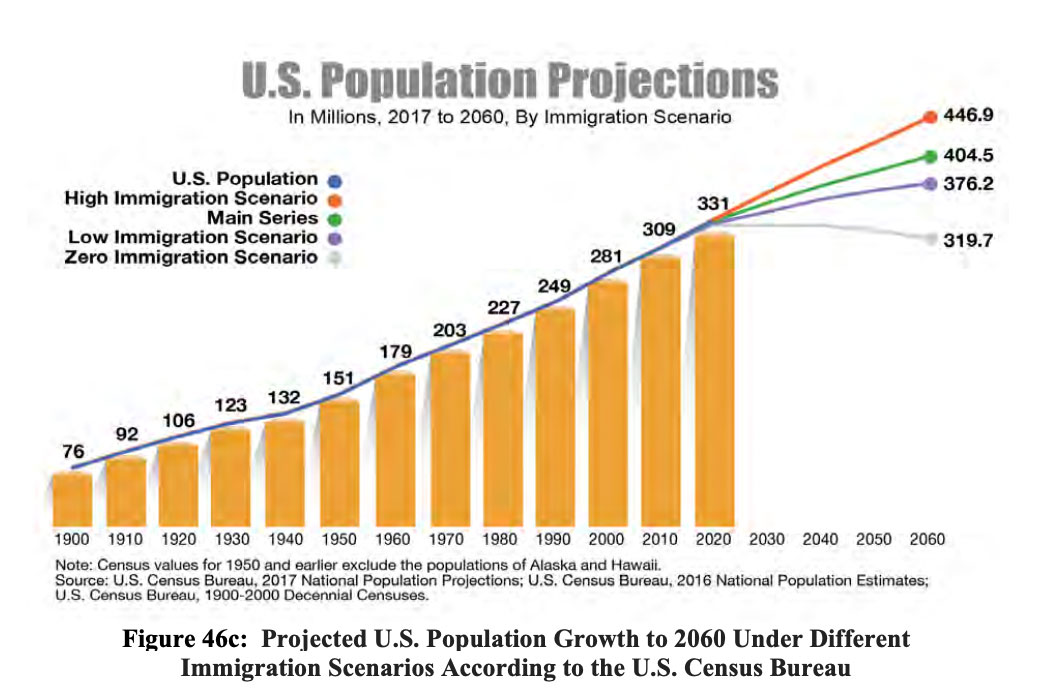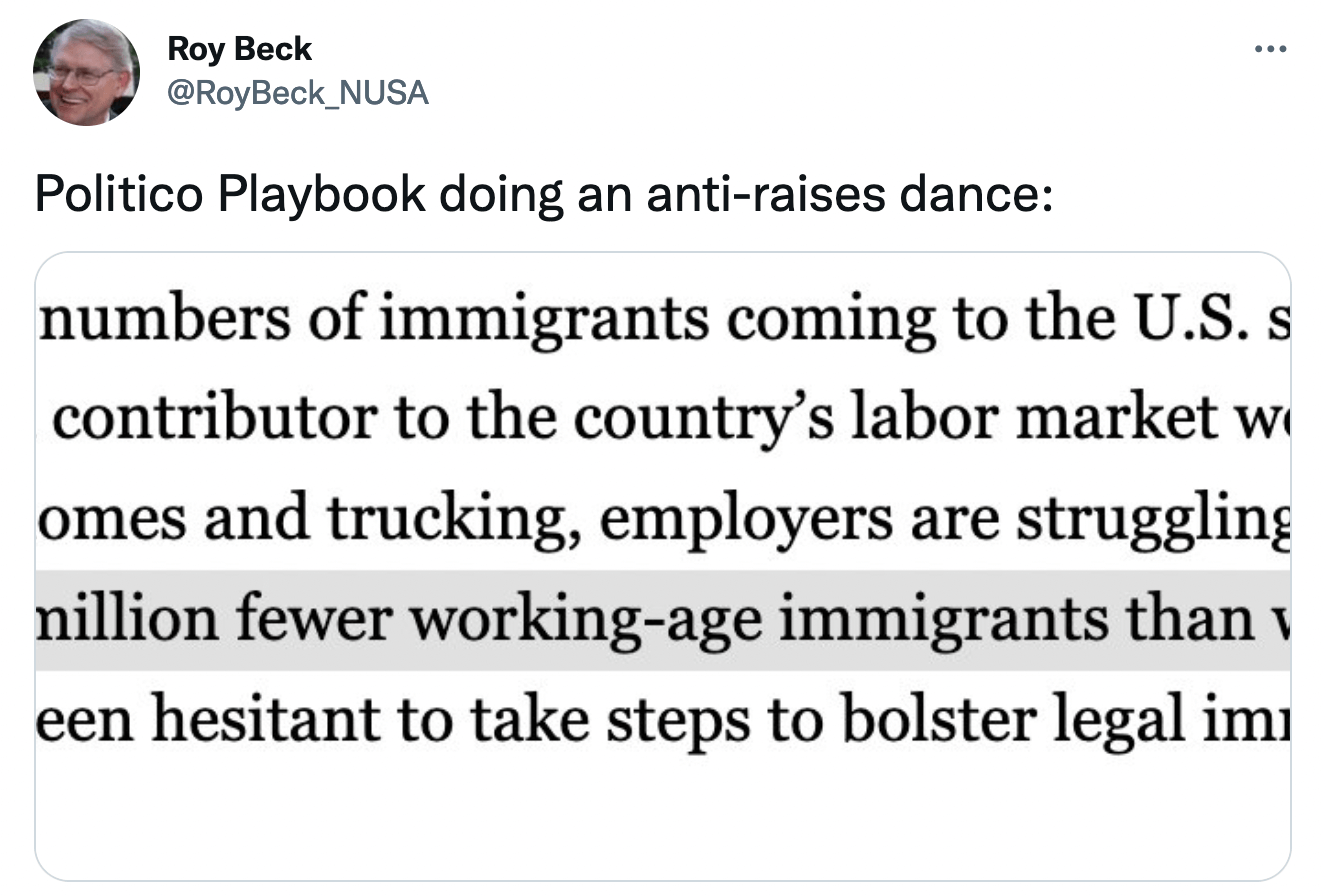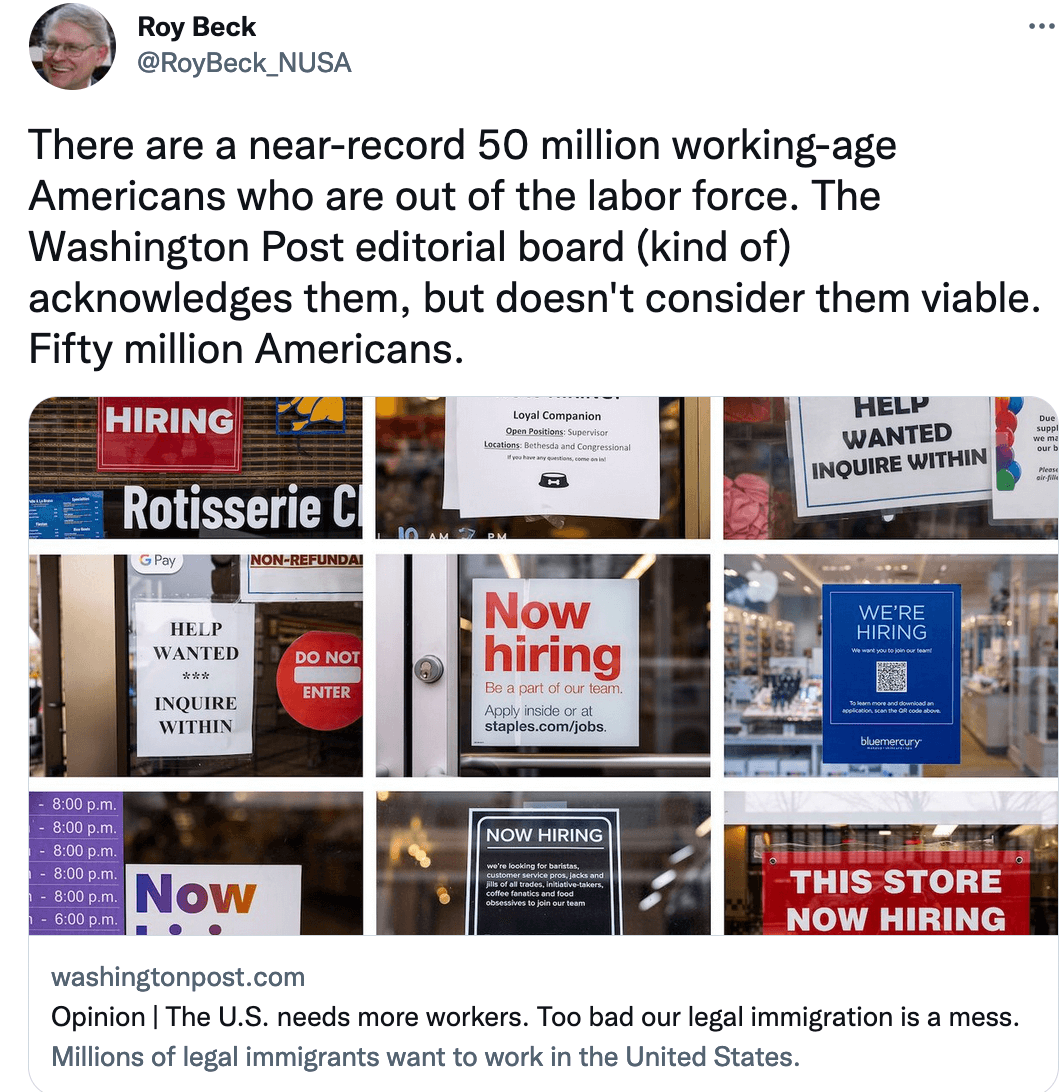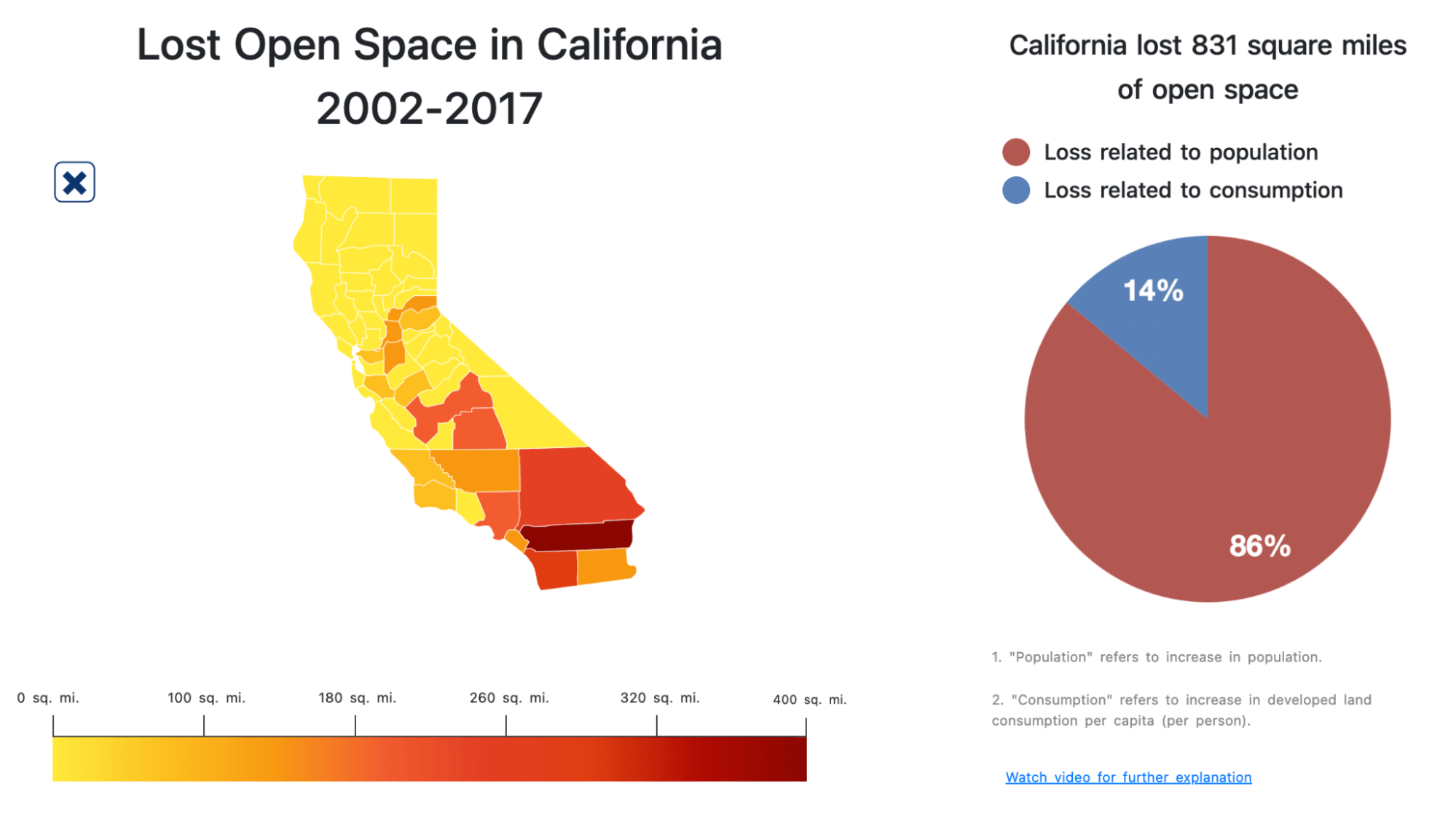“Ponzi demography also turns to immigration for additional population growth in order to boost companies’ profits. The standard slogan in this instance is “the country urgently needs increased immigration,” even when immigration may already be at record levels…” – Joseph Chamie, demographer
In arguing for increased immigration because “the U.S. isn’t growing as fast as it used to,” NPR’s Kelsey Snell and The Atlantic‘s Derek Thompson are floating along in the mainstream media’s current, with nary a thought for limits.

Thompson describes immigration as “a cheat code.”
“If we want to supercharge science and innovation,” he tells NPR, “we should recognize that immigration will get us there.”
His evidence boils down to a quote from the Institute for Progress that claims immigrants start 50 percent of new billion-dollar businesses. That’s a clever bit of statistical sleight of hand, though I’m surprised that Thompson, usually a thoughtful writer, relies so heavily on it. Studies have found that a little more than half of billion-dollar startups have at least one immigrant founder. But as the italics indicate, companies often have more than one founder. For such a study to have any integrity it would say what percentage of companies are founded by natives using the same measurement.
The predecessor of the billion-dollar startup claim was the claim that 25 percent of all high tech startups were founded by immigrants – a popular claim back when Silicon Valley enjoyed universal adoration. But using the same methodology, one could claim that 92 percent of the top technology companies were founded by U.S.-born citizens. As Mark Twain said, there are lies, damned lies, and statistics!
Contra Thompson, there are plenty of examples of mass immigration depressing American innovation, even though it is likely true that the average immigrant has a natural risk-taking – if not entrepreneurial – spirit.
Mass immigration has depressed wages in STEM fields enough to drive the best and brightest into different careers.
Productivity levels have collapsed in the construction industry in the era of mass immigration, as the abundance of cheap labor has discouraged investment in labor-saving technologies.
And the examples of how mass immigration has discouraged innovation in the agriculture industry go on and on and on and on…
Why so many in the media fall for wage-depressing Ponzi schemes is a question worth investigating, but for some, the wage depression is clearly the point. Citing The Wall Street Journal, an email from Politico Playbook celebrates the impact mass immigration has on wages:
Declining numbers of immigrants coming to the U.S. since the start of the Trump administration are a little-discussed contributor to the country’s labor market woes, WSJ’s Michelle Hackman reports. In industries like nursing homes and trucking, employers are struggling to find workers (and wages are rising) because the country has 2.4 million fewer working-age immigrants than we would have at previous trend levels. And the administration has been hesitant to take steps to bolster legal immigration because of border politics, Hackman reports.”

Alan Tonelson observes the trend:
It’s as if the Open Borders Lobby — both its conservative and liberal wings — has recently decided that it’s really had enough of labor market tightness that’s due to reduced immigration, and that’s also giving so many of America’s workers a long-needed pay raise. So it’s been re-upping the pressure to open the floodgates once again and solve this terrible problem. (See, e.g., here, here, and here“.)
The Washington Post says that while tighter labor markets are giving workers “tremendous power,” the U.S. government should help companies who are “desperate for workers” gain access to “millions” of overseas workers who “want to work in the United States.”

Tonelson says The Post‘s argument “is not only profoundly anti-American worker. It’s completely false….Between 2020 and 2021, inflation-adjusted hourly pay for all U.S. workers in the private sector were down by 2.10 percent and for blue-collar workers by 1.52 percent.”

In 2018, Angela Nagle remarked that the “destruction and abandonment of labor politics means that, at present, immigration issues can only play out within the framework of a culture war, fought entirely on moral grounds.” Four years later, the biggest newspapers in the country are agitating for higher immigration levels despite – and in some cases because – it would benefit the corporate world and tap the brakes on rising wages.
“We have this tremendous biodiversity, but we also have these major stressors, including that we built ourselves into the fifth-largest economy in the world with 40 million people.” – Wade Crowfoot, California’s natural resources secretary

The New York Times has produced wonderful interactive maps of the threatened biodiversity within the United States. Conservationists stress that it isn’t enough to focus on areas where species are most at risk, we have to protect surrounding habitats as well. Housing growth is one of the most important causes of habitat loss.
According to the Center for American Progress, “habitat fragmentation is now so severe that a pin dropped at random on a map of the contiguous United States can be expected to land less than half a mile from human development…Everything green is getting squeezed.”
The Times notes that California “has more land under biodiversity protection than any other of the lower 48 states,” but it isn’t enough to overcome the 40 million stressors Wade Crowfoot alludes to.
“If the United States intends to address climate change, biodiversity loss, pollution, etc.,” writes demographer Joseph Chamiel in The Hill, “it must consider how its population affects each issue.”
Our own interactive maps consider how population growth contributes to the loss of habitats. In California, for instance, 86 percent of California’s lost open space during the most recent 15-year study period was a result of population growth.

But none of the major environmental groups and few political or media elites are willing to address the issue for reasons pertaining to profits, politics, and power, according to Chamie. Instead, they peddle Ponzi demography – a pyramid scheme that pays short-term dividends for some, and long-term costs for all.
Thompson is on to something when he calls immigration “a cheat code” to grow the economy. More people = bigger economy. But it isn’t a “cheap code,” and the costs go beyond increased economic inequality. It’s not at all clear that the biodiversity within our borders can sustain itself at our current population, much less the ever-expanding one that Thompson prescribes.
“Ponzi demography also turns to immigration for additional population growth in order to boost companies’ profits,” Chamie writes. “The standard slogan in this instance is “the country urgently needs increased immigration,” even when immigration may already be at record levels…”
“Thousands of scientists worldwide take an opposing view,” states Chamie, who urges the United States to set “an exemplary model” for other countries:
[W]ith the nation’s fertility below the replacement level, stabilizing America’s population will necessarily involve substantially reducing immigration levels, estimated at approximately 1.1 million per year. If immigration levels were, for example, close to zero, America’s projected population in 2060 would be 320 million versus 405 million if immigration continued at the same pace.”
JEREMY BECK is a V.P., Deputy Director for NumbersUSA